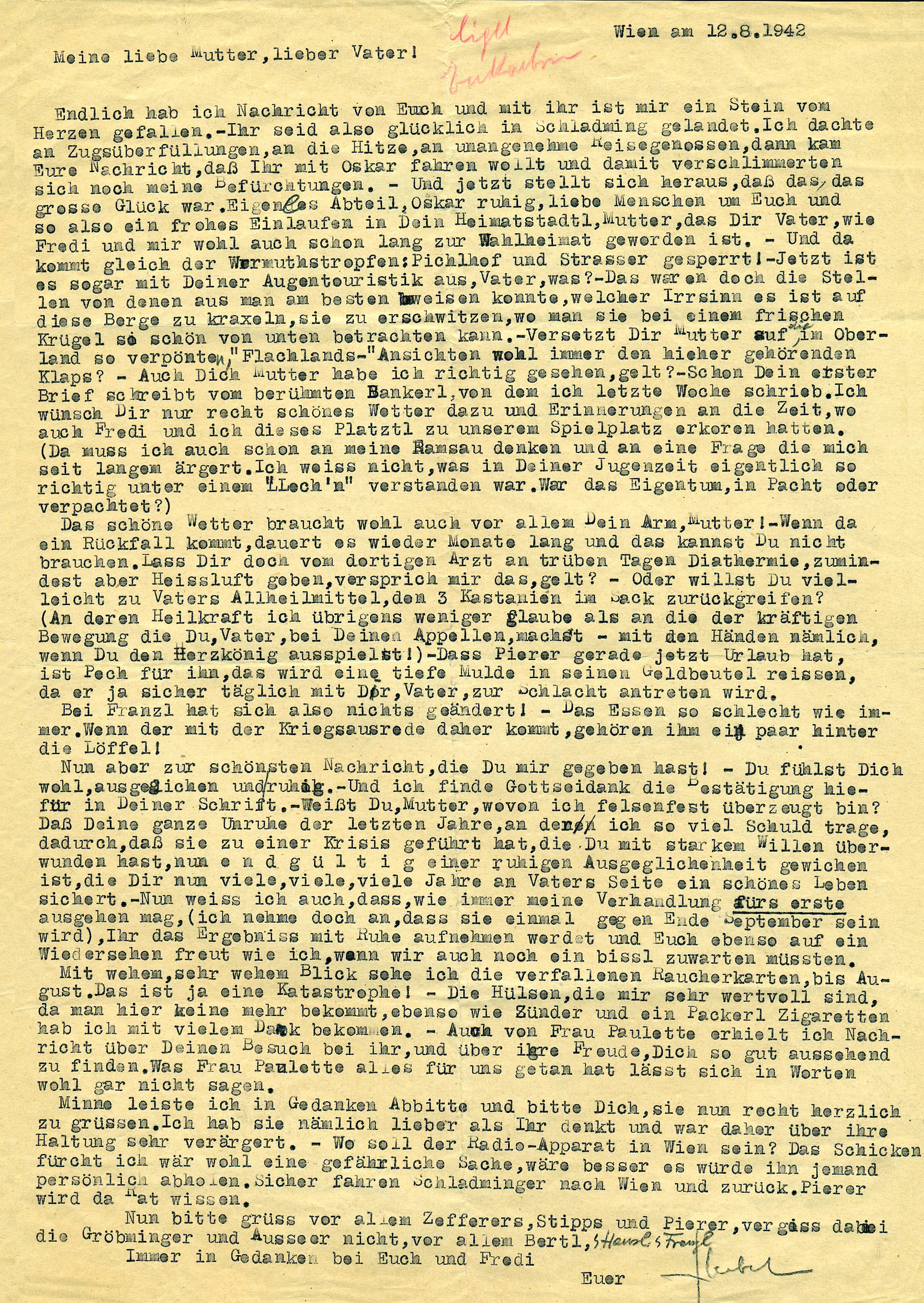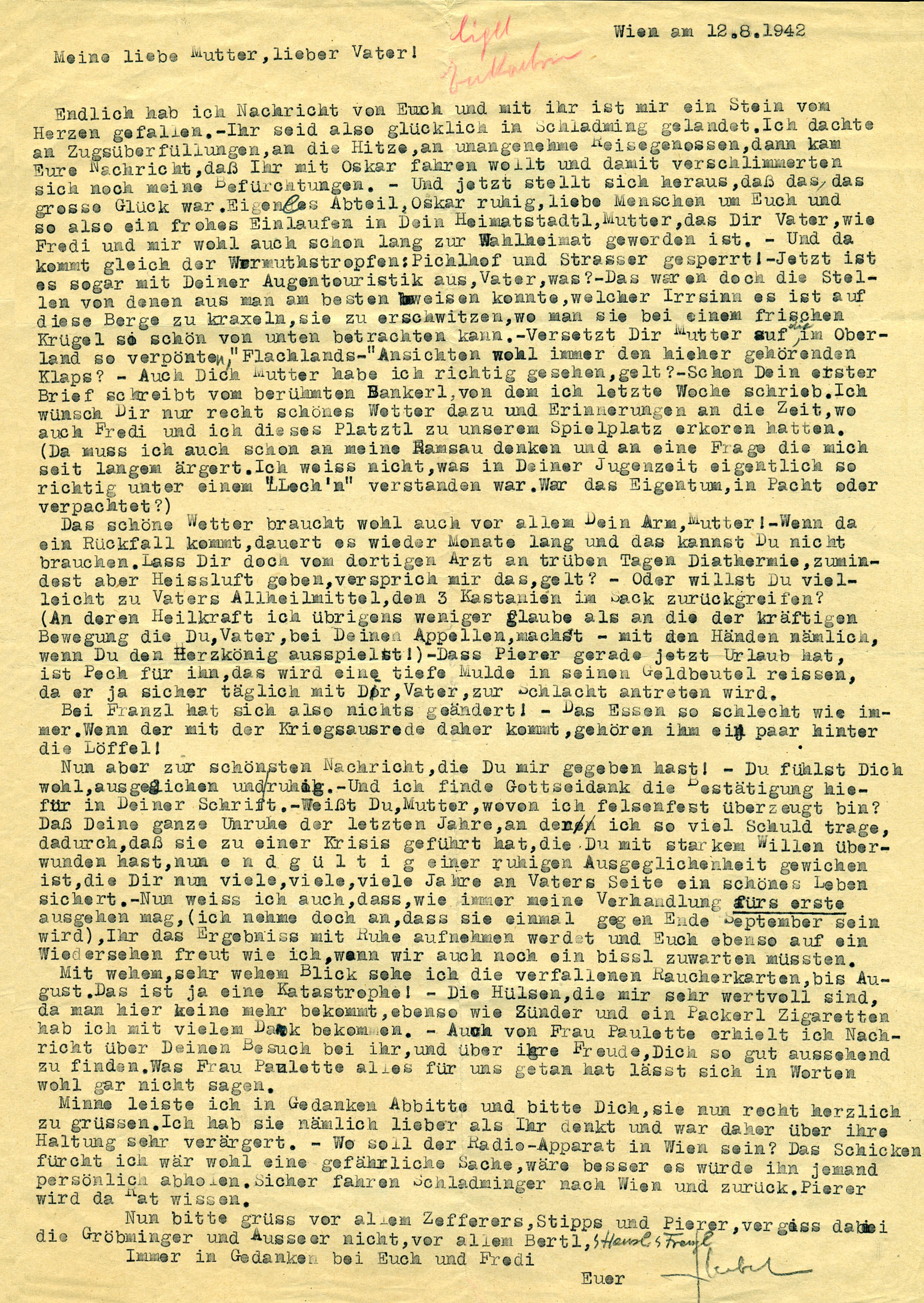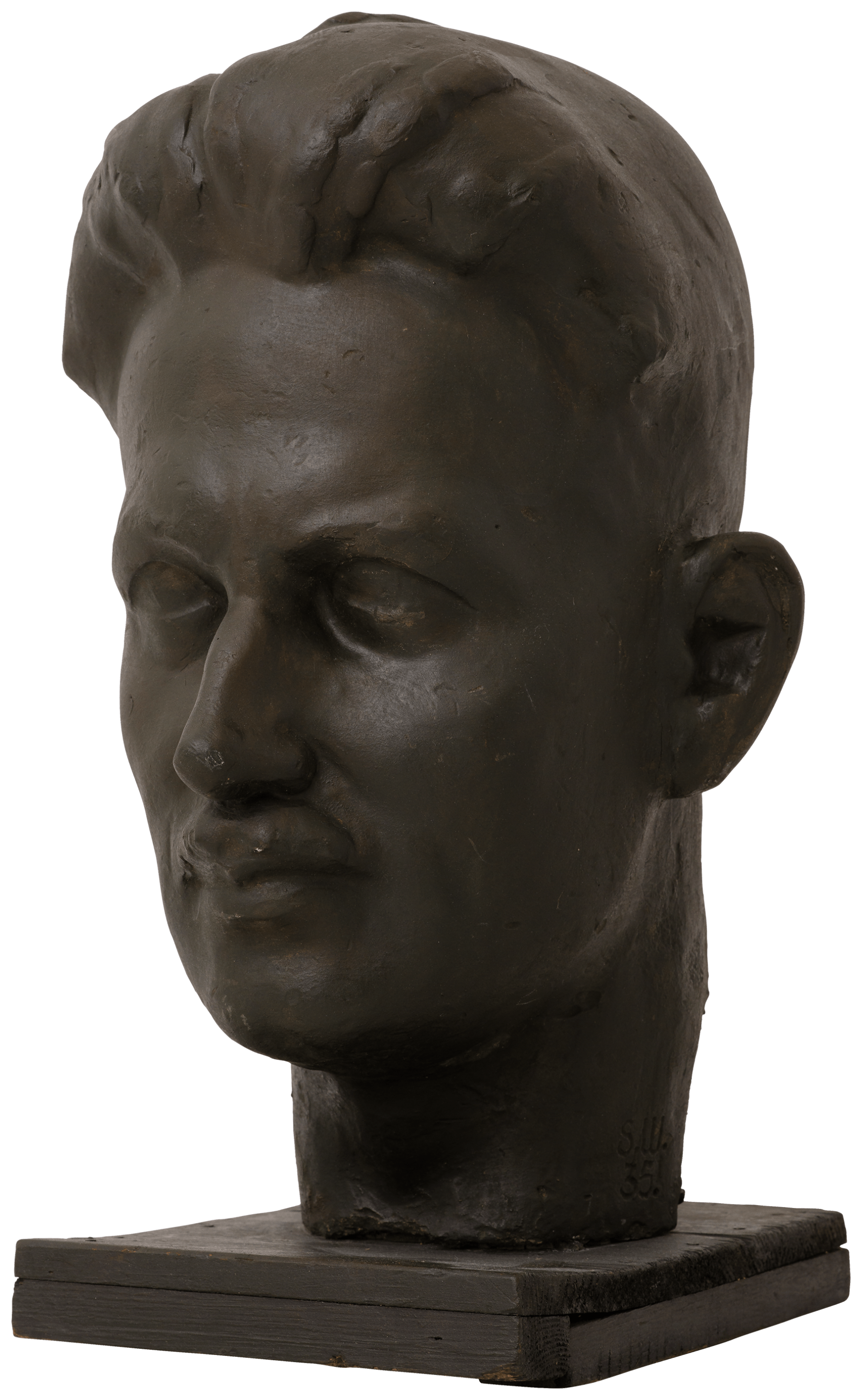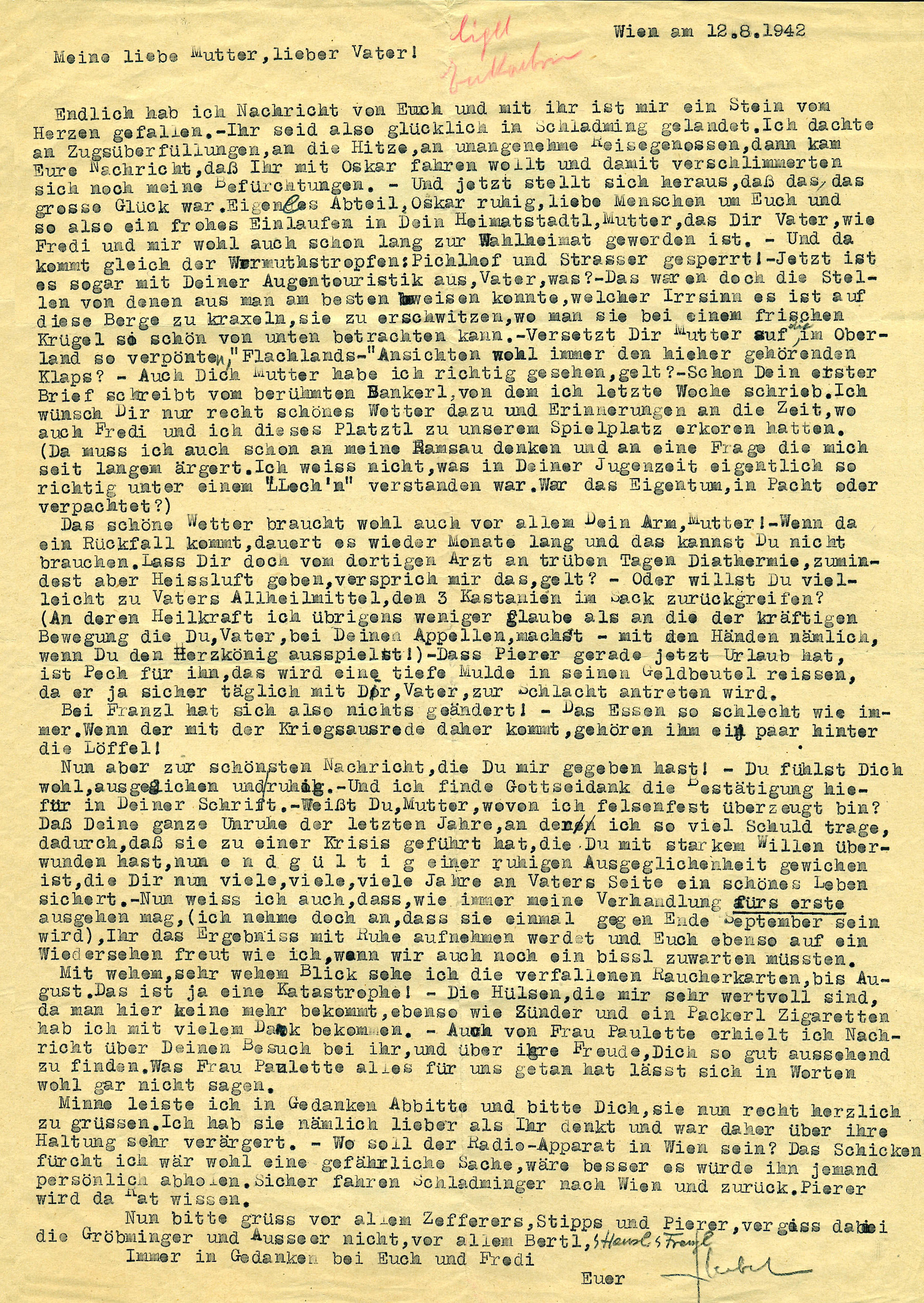

Letters to his parents Herbert Eichholzer, Vienna, 3 May 1942 and 12 August 1942
Letters from the Death Row Cell
The Graz-based architect Herbert Eichholzer (1903 – 1943) fled from Graz for political reasons on 13 March 1938. In spring 1940, he returned from Turkey on behalf of the Communist Party of Austria in order to coordinate resistance in Graz and Vienna, and to restore communication with the foreign headquarters of the Communist Party (KPÖ). On 2 February 1941, he was arrested and sentenced to death for preparations for high treason by the People’s Court. Many letters from his time under arrest have survived.
Pencil and typewriter on paper
Graz Museum
Herbert Eichholzer
In the 1920s, Herbert Eichholzer (1903–1943), a young modern architect, had some success and was commissioned with larger projects. In 1932, he joined the Graz Secession. In the 1930s, he received the Silver Medal of the City of Graz, in 1935 the Medal of the Brussels International Exposition and the Austrian State Prize. In 1937, the Albrecher-Leskoschek Villa in Hilmteichstraße was built according to his plans—fitted out with furniture by Josef Frank and a large wall painting, “Allegory of Friends”, by the artist Axel Leskoschek. This modern synthesis of the arts served left-wing artists and intellectuals as a meeting place for political resistance during the Nazi era.
Resistance against Dictatorships
Already as a student, Herbert Eichholzer was active for the Social Democratic Workers’ Party. As a member of the Republican Protection League, he participated in the February Uprising of 1934 against the “Corporative State” dictatorship and was arrested. After the “Anschluss” of Austria to National Socialist Germany, he fled to Paris via Switzerland, where he then supported refugees from Austria as a member of the Communist Party. In April 1940, he returned to Graz and worked in the resistance (among other things, on the illegal border traffic to Zagreb). As a Wehrmacht soldier, he also wrote leaflets, for example, to shed light on the murders of mentally ill people in the so-called “Euthanasia Programme”. He was arrested in February 1941 and executed for high treason in January 1943.


